Electric Drive Conversion / Pontiac Fiero 1988
1988 Pontiac Fiero for sale in South Orange, New Jersey, United States
| Condition: | Used |
| Item location: | South Orange, New Jersey, United States |
| Make: | Pontiac |
| Model: | Fiero |
| Year: | 1988 |
| Mileage: | 75000 |
| VIN: | 1g2pg1194jp221692 |
| Color: | Green |
| Engine size: | ELECTRIC |
| Transmission: | Manual |
| Vehicle Title: | Clear |
| Want to buy? | Contact seller! |
Description for Pontiac Fiero 1988
Car is now in NJ and has an issue with the 12 volt system charging.
Below is from the original owner.
----
https://jalopnik.com/this-fiero-is-the-electric-sports-car-you-should-buy-ri-1823494520
Up for auction is a 1988 Pontiac Fiero GT that has been converted to electric drive. Are you interested in a zero emissions commuter vehicle but you don't want to drive one of those cookie cutter OEM models? You will definitely stand out as I have for the pastsix years in this EV. It has always been a hit at the local car shows and gets compliments wherever it goes. What I'm offering here is a bargain for anyone that has considered doing a build of their own but could not justify the expense, time required, or felt that maybe they didn't have sufficient technical ability. The starting bid is set at a small fraction of the total investment that the car represents.
The conversion was completed in late November of 2011 and up until eight months ago it had been used as my daily commuter. During its time as a commute vehicle it accumulated more than 63,000 all electric miles. At the time the conversion was completed, the odometer read 89,860 miles. The odometer was then reset to zero so that it would indicate only the miles driven in electric mode.If you add the pre conversion miles to the current reading you get a total usage of just over 154,359 miles. I performed the odometer reset because I could not be sure that a desirable and affordable OEM EV would ever become available. At that time It looked like I would be keeping and driving my conversion indefinitely in which case it would not mater to anyone that it had been reset.But then last year, GM introduced the Bolt EV. I have since purchased one for use asas my daily zero emissions commuter. As a long time Fiero enthusiast (this car is copy #6 since 1984) I'm now looking forward to purchasing copy number seven (gas powered) so I can once again participate in the activities of my local Fiero club, which include events like long road trips. These are the only two reasons this car is now being offered for sale, otherwise I would be quite content to keep it. The car is featured in a video on my YouTube channel http://www.youtube.com/watch?v=9HZ35gFw8Bg. If the link doesn't work, just search for Totally Green Fiero GT EV.
The following is a description of the conversion: The original (and now freshly rebuilt) Getrag 5 speed manual transaxle, via a custom bell housing adapter, is mated to an HPEVS AC-50 motor. A new flywheel and clutch kit have also been installed. The AC50 motor makes approximately 76 HP and 120 pound feet of torque. (Note: Less than 20 HP is all that is needed for a Fiero to achieve 65 MPH.) The motor controller is a Curtis 1238-7601 which produces 650A/phase. Both the motor and the controller are air cooled so there are no fluids to worry about. The battery pack consists of thirty-four Thundersky 260 AH prismatic LiFePO4 cells connected in series. These cells are rated at up to 3000 cycles and are the safest and most stable lithium chemistry currently used in electric vehicles. Their only drawback is lower energy density than the Lithium cobalt or Lithium manganese cells used in most OEM EVs. The nominal pack voltage is 113.9V. The total stored energy is then 29,614 WH. The pack cell compliment is divided amongst three boxes so as to distribute the weight. A stock Fiero GT has a 44/56 weight distribution and this conversion has a nearly balanced 48/52 distribution. The post conversion weight is 3,190 LBS which is just 400 LBS over stock. Since 292 of those pounds went to the front of the vehicle, it was necessary to install custom front coil springs. The springs were the only mandatory suspension modification. The sway bar end links had previously been upgraded to zero lash units from Rodney Dickman's Automotive Accessories. The vehicle handles very well and is very confidence inspiring to drive. The tires are also nearly new. Originally the car had a 2.5 KW on-board charger but that has since been upgraded to a 5 KW unit. When plugged into a standard J1772 charging station at 208/240 VAC, it can add up to ~15 miles of range per hour of charging. A separate charge cord with a Yazaki J1772 connector will be included with the vehicle for opportunity charging at 120 VAC outlets. Note that at 120 VAC it takes considerably longer to fully charge the pack. The J1772 charge port is located where the gas filler was originally. Behind the filler door you will also find a tri-colored LED charge status indicator who's behavior will be described in the documentation package described below. The motor controller came with a Curtis Spyglass display instrument that has just been incorporated into the vehicle. It is mounted in a gage pod on the A-pillar. Over the last year orso the entire braking system has been replaced in increments. I was not satisfied with the brakes until the last upgraded components were installed. The four rubber flex lines were replaced with stainless braded hoses. That finally brought the stopping power up to the proper level. The traction pack has a BMS. This version of BMS is the monitor type, rather than the management type. This means that it does not incorporate active cell balancing schemes which have proven to be dangerous when improperly designed and implemented. Instead, this system works with the pack charger to pause charging in the event that a high cell is detected. The system cycles the charger on and off until the total pack voltage has rippled its way up to 124.1 volts. That voltage is equal to 3.65 V/cell which is end of charge per the battery cell spec sheet. The charger then shuts down.The individual cell modules also monitor for low cells during discharge. In both High and Low cell conditions a piezo alarm sounds. Should the alarm sound while the vehicle is being driven, the operator must immediately pull over and shut down the system. An overly discharged cell can be forced into a reverse polarity condition which will destroy the cell. This situation will only occur when the driver is attempting to squeeze every electron and mile of range out of the pack. This is therefore not a recommended behavior. The Spyglass display can be used to keep an eye on the pack voltage. The pack is completely depleted at 93.5V while at rest, but the driver should plan on recharging at no lower than 100V. The brake system uses a 12 V electric vacuum pump to feed the brake booster. This was necessary due to the absence of engine derived vacuum. The 12 V systems are powered from an ElCon 400 watt DC/DC converter that takes the traction pack voltage and converts it down to 13.8/14.2 V. This was necessary due to the absence of a motor driven alternator. The vehicle is no longer equipped with AC but it does have a heater. The original motor coolant based heater core has been replaced with a ceramic PTC array. This array can produce up to 1500W of heat which has shown its self to be more than adequate even on near freezing days. All exterior and interior courtesy lamps have been converted to LEDs. This significantly reduces the load on the DC/DC converter and adds ever so slightly to the car's range.
Expected lifespan of the battery pack: For those unfamiliar with lithium batteries I provide the following information. Regardless of the particular version of lithium cell, the battery industry agrees that once a cell has lost just 20% of its original capacity, it has thus used up its rated cycle life. It is important to consider that the cell still has 80% of its original capacity. This means that the vehicle can still do 80% of what it could do when its cells were new. Based on this behavior and a 3000 cycle rating, it is not unrealistic to expect up to 250,000 miles of life from this pack.
Performance: Stoplight performance is decent with the occasional surprise to the driver next to you. When the other drivers aren't seeing a dragstrip Christmas tree instead of a traffic signal, this car will usually jump out ahead of theirs. Top speed achieved thus far is an even 100 MPH. The car reaches 80 MPH in fairly short order but getting from there to 100 requires a stretch of road as well as very specific environmental conditions which include, temperature, humidity, grade, and daylight. Daylight, because the car is more aerodynamic with the headlamp doors closed. Speeds above 80 should generally be limited to short duration due to all of the systems being air cooled. Also, range is dramatically reduced at high speeds. This car has traveled as many as 105 miles on a charge on two occasions. However those identical trips involved a mix of speeds and driving conditions. I have determined that 65 to 70 MPH freeway trips consume about 330 WH/mile which limits the range to about 83 freeway miles. I should also mention that steep grades at freeway speeds result in a lowered top speed. The car does fine at city speeds going up and down steep hills, such as those in San Francisco, but speed falls off to about 60-62 on long tall freeway grades. Downhill driving is made easier thanks to regenerative braking. The car is configured with throttle-off regen. As you back the pedal off, kinetic energy is converted back into electrical energy and put back into the traction pack. This ever so slightly increases the vehicle's range, perhaps by 3%. It also takes load off of the friction brakes while improving drivability.
Instrumentation: The car's original gas gage is now driven from a Zeva electronic module that measures amp-hours in and out of the traction pack. It uses that measurement to apply an inversely proportional PWM signal to the stock dash mounted fuel gage. I use the trip odometer in concert with the fuel gage. I reset the trip odometer every time the pack is fully charged. As mentioned above, the Curtis Spyglass gage has recently been installed. A push button has been mounted to the trim plate at the cigarette lighter location. The button enables the driver to cycle through various parameters displayed by the gage including pack voltage, motor current, motor temperature, controller temperature, and motor RPM. The stock tachometer is also used. A magnetic sensor has been implemented on the aux shaft of the motor which sends the required three pulses per rotation to the tac. Conveniently the electric motor is limited to the same 6500 RPM that thetachometer tops out at. The Fiero gage cluster includes a voltage gage for the 12V system. Monitoring this gage at start-up is how the operator knows that the DC/DC converter is working. The needle passes midpoint indicating that the converter is up and running.
General items: This car started out as a restoration project prior to the green light being given for the electric conversion. Back around 2008 the interior of the car was removed and everything steam cleaned. A new Fiero Store plastic backed headliner was installed. The center console was restored and repainted while the driver's seat got replacement leather. The interior still looks pretty good but is once again showing some signs of the passage of time. There are no rips or tears but service and car wash personnel have begun to wear a spot on the outside bolster on the driver's seat. Long ago I figured out a method for getting in and out ofFieros that avoids wear to the bolster, but unfortunately it is seldom convenient to pass along the technique. The exterior was repainted about two and a half years ago and still looks quite good from a short distance and further away, however there are some chips and dings on the nose and hood that are evident at close range. There is also a stress crack under the paint on the hood where the hood boxes-in the passenger side headlamp door, again only noticeable from up close. Some touchup paint in both gold and green will be provided. Last winter a small pebble got trapped under the driver's side wiper blade which caused the windshield to get an arc shaped scratch in it. The factory AM/FM cassette radio has been replaced by a Retro Sound Newport model. This radio features two USB ports as well as two AUX inputs. It also has a Bluetooth hands free interface for your mobile phone that lets you answer calls and stream music. The microphone is mounted under the dash. This radio was also designed to look like a GM factory unit. Rear panel RCA connectors facilitate the use of external amplifiers and equalizers. This Fiero left the factory equipped with the optional Performance Sound system which added an in dash sub-woofer. The OEM driver in the sub cabinet has been re-coned and works very well. The other four speakers in the system have been replaced with aftermarket units that also work well. The system sounds very good.
Approximately five years ago while driving on a dark and foggy country road I encountered a fallen tree lying across my path. Unfortunately I could not see it until it was too late. As a result I drove straight through it. This resulted in damage to the both the front and rear fascia. It also resulted in some denting and scrapes to the undercarriage. I mentioned earlier that the car had been painted about two years ago. Sometime later when I looked under the car I found gold overspray. I can't imagine how the paint shop managed to get paint there but where the gold paint got sprayed over the dirty black underside it looks just like rust. Fortunately this is a 100% California car that has no significant rust.
Included, and I think you will agree that it is necessary; is a documentation package. The package will include an addendum to the owner's manual describing the slightly different driving technique that is required by this vehicle, along with its unique maintenance items. Also included in the documentation package will be schematics for all of the added wiring, systems, and how they interface with the factory systems. All of the pertinent data sheets and user manuals will also be included.
The auction: This 1988 Fiero GT is being sold as is with no warranties expressed or implied. Bidders should keep in mind that this vehicle is considered experimental. As such I will provide tech support via email or telephone for 90 days past the date that the winning bidder takes possession. Transportation of the vehicle is the buyer's responsibility; however I will work with your shipper. A $500.00 PayPal deposit is required within 24 hours of the auction closing. The winning bidder will then have an additional eight days to pay the balance in cash, or by bank money order and claim the vehicle. No personal checks will be accepted. The existing title is free and clear. It can be signed over to the new owner at the time of final payment. A bill of sale will also be prepared for signatures. Thanks for viewing my auction.
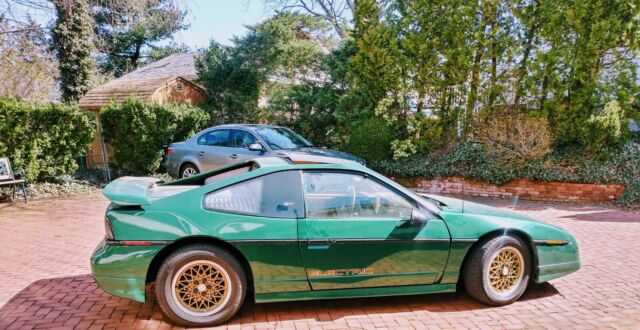
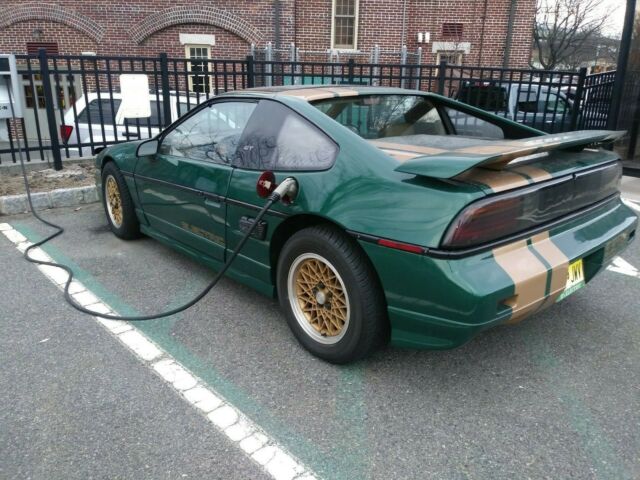
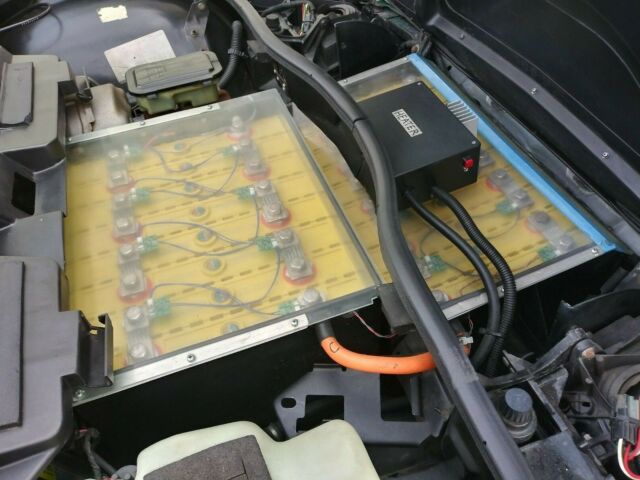
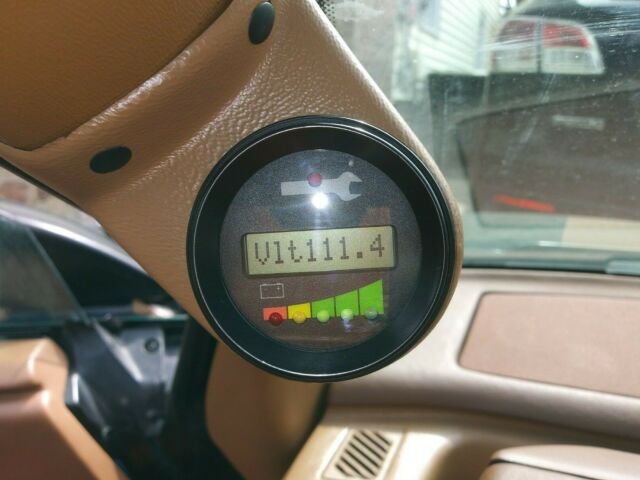
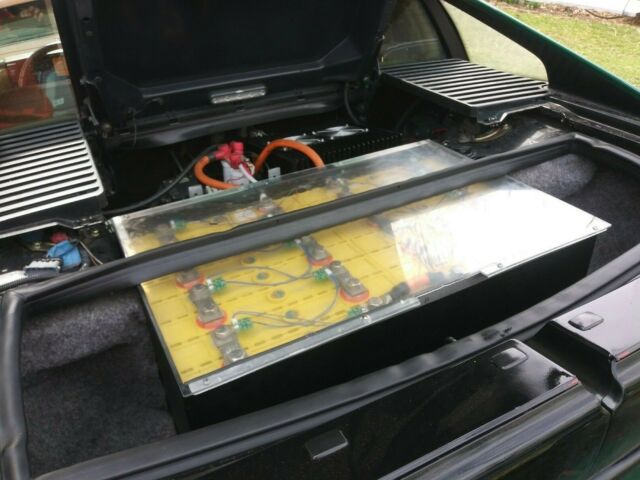
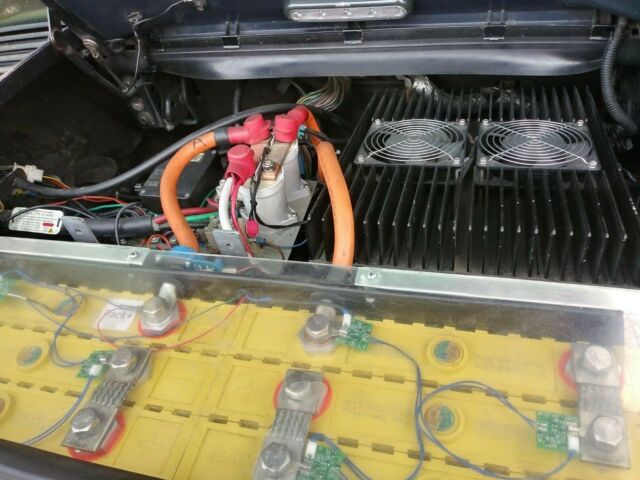
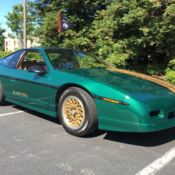 Electric 1988 Pontiac Fiero GT
Electric 1988 Pontiac Fiero GT
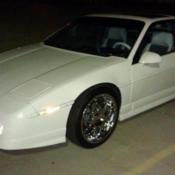 Classic 1988 Pontiac Fiero GT, custom Fiero Gt, pontiac fiero
Classic 1988 Pontiac Fiero GT, custom Fiero Gt, pontiac fiero
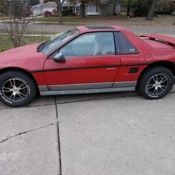 1985 Pontiac Fiero converted to electric
1985 Pontiac Fiero converted to electric
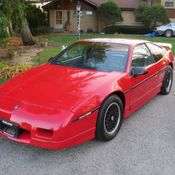 1988 Pontiac Fiero GT 5 Spd. Last and best year for the Fiero!!!
1988 Pontiac Fiero GT 5 Spd. Last and best year for the Fiero!!!
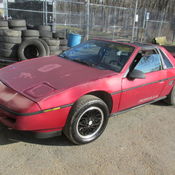 1988 Pontiac Fiero CJB T-Top
1988 Pontiac Fiero CJB T-Top
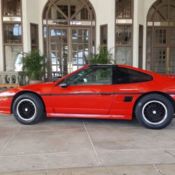 1988 Pontiac Fiero GT T-Top
1988 Pontiac Fiero GT T-Top
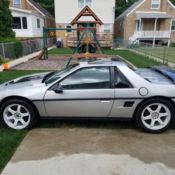 1988 V8 Pontiac Fiero (LS3)
1988 V8 Pontiac Fiero (LS3)
 1988 pontiac fiero gt 2.8l
1988 pontiac fiero gt 2.8l